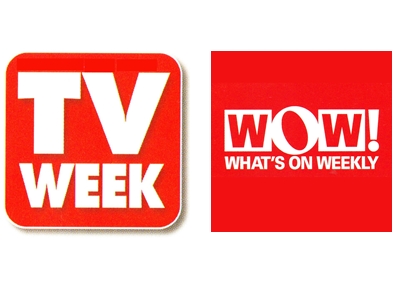
In 2002 the biggest battle in the TV landscape wasn’t on screen but was based around duelling TV magazines.
For over 20 years, TV Week had a national monopoly on the market, published by Southdown Press (later Pacific Publications) on behalf of a joint venture between it and Australian Consolidated Press (ACP). This arrangement was the outcome the 1980 shake-up of the TV magazine market, where TV Week consumed the two major rival titles TV Times and TV Guide.
But by 2002, ACP felt that TV Week was “languishing” under Pacific’s control. Circulation of the title had peaked in the 800,000s in the mid-1980s but, with increasing competition from freebie TV magazines and inserts in newspapers, had fallen to below 300,000 by 2002. A spokesperson for ACP told The Australian at the time: “The frustration we’ve had is that we haven’t had operational control of the magazine. Which is why we moved to… determine its ownership. We believe we can do a much superior job.”
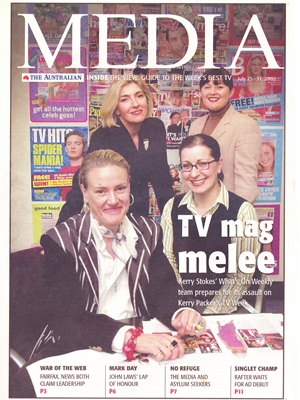
Pacific chief executive Ian Meikle said that Pacific was held back from taking risks with the magazine. “You’re somewhat restricted in what you can do because you are constrained always to providing them (ACP) with a dividend cheque, and there is an expectation of the size of that. So it wasn’t ours to take risks with. TV Week’s as much a victim of their (ACP) lack of interest in it as anything else.”
ACP’s concern towards TV Week was also exacerbated when Pacific was purchased by Kerry Stokes‘ Seven Network, while ACP had the Nine Network as one of its sister companies.
ACP then decided to exercise a long-standing contractual clause, known as a Savoy clause, which gave it the right to offer to sell its half share of TV Week to Pacific at any time. If its asking price was rejected by Pacific then it was obliged to acquire Pacific’s half share for the same amount. In this instance, ACP offered $60 million to Pacific, which was declined. ACP then had to pay $60 million to buy out Pacific’s half share and effectively take full control of TV Week. The transaction essentially included only the TV Week trademark. The magazine’s editorial staff and associated computer software and templates were kept at Pacific.
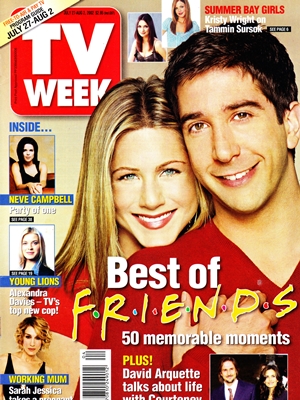
Pacific, now down one weekly magazine but with $60 million added to the bank, decided to redeploy its TV Week workforce to form a new magazine — What’s On Weekly (WOW) — to take on TV Week, and it had to do so at barely three week’s notice to coincide with TV Week’s sale to ACP being completed.
ACP, with only the TV Week masthead purchased, also had the task of also essentially creating a new magazine and templates from scratch and having to ensure that TV Week did not have a break in publication. It conceded, however, that it would not be able to offer any significant changes to the familiar TV Week product for the first few months as it established itself.
There were also concerns that having the two magazine titles tied to each of the top-rating networks might slant coverage towards their respective networks. “Sure there will be Nine celebrities in TV Week, but it’s not going to be exclusively a Nine product,” a spokesperson for ACP told The Australian. Meanwhile, Pacific’s Meikle said: “There’s no future for (WOW’s) credibility in being solely a cipher for Seven. It will have a natural interest in, say, Seven’s dramas and their stars, but not at the exclusion of the other networks.”
The sole commercial network left out of the magazine equation, Ten, was also hopeful that its shows and personalities would still be granted coverage in both magazines. “I’d like to think that’s how they’d work,” Ten publicity manager Beverley May told The Australian.
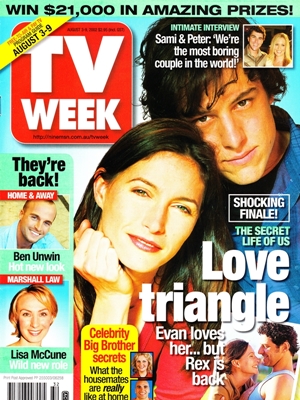
The battle began on 29 July 2002 when the debut edition of WOW and the first ACP-led TV Week hit the newsstands. ACP’s first TV Week cover featured Claudia Karvan and Samuel Johnson from Ten’s Secret Life Of Us. Meanwhile, WOW’s debut cover featured Georgie Parker from Seven’s All Saints.
There was not a lot to differentiate the two magazines in terms of content or layout, or anything to offer a genuine point of difference between them other than the price tag — TV Week’s $2.95 to WOW’s $2.75. Both had the usual spread of gossip pages and pictures, previews of the week’s TV shows and soapie storylines, horoscopes and puzzles, computers, music, new cinema and DVD releases and virtually identical TV listings. Although there was some variation in articles, both magazines featured prominent stories around former Blue Heelers star Lisa McCune’s return to TV in an upcoming new Seven series, Marshall Law.
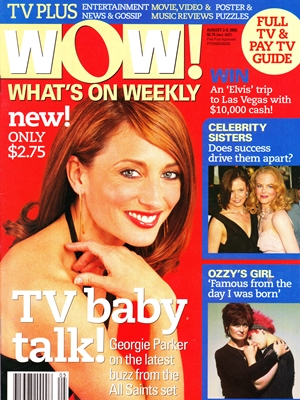
The new TV Week launched a competition for readers to win a home entertainment package of a 106cm plasma TV (valued at $13,189), a DVD player and 20 movies. Second prize was a 76cm Panasonic flat-screen TV valued at $3849.
WOW launched with a competition to win a Las Vegas experience, including a five-night stay at the MGM Grand, and $10,000 cash.
Both magazines also happened to run for 88 pages.
But as soon as the public battle started, it appeared that both publishers had overlooked nailing down TV Week’s pride and joy, the Logie Awards, with both ACP and Pacific claiming ownership. Pacific claimed that the sale of the TV Week trademark to ACP did not include the Logie Awards and that they would remain a product linked Pacific and to the WOW masthead. ACP, on the other hand, argued that the Logies were property intrinsincly linked to TV Week and should be included with the purchase of TV Week. It was a battle that headed to court which eventually judged in favour of ACP that the awards were vested to the TV Week brand. But by then it was a moot point, anyway, as WOW had already run its race. With circulation reported to only hit arund 60,000 — well short of the targetted 100,000 — WOW was quietly put to rest by the end of 2002.
TV Week, now part of Are Media — a successor to the former ACP Magazines, is now in its 65th year of publication.
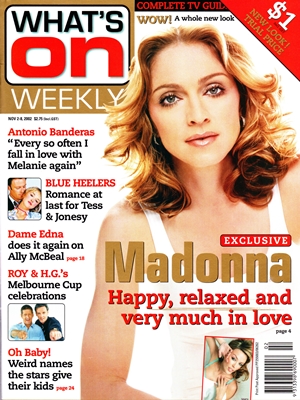
Source: The Age
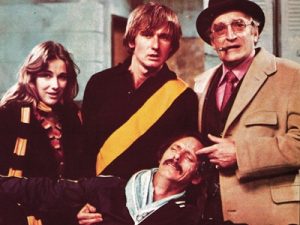
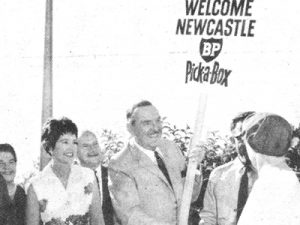

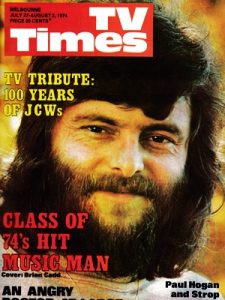
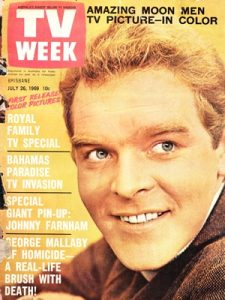
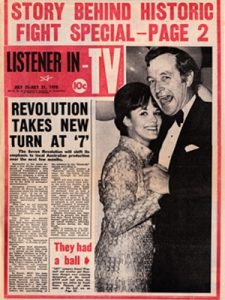
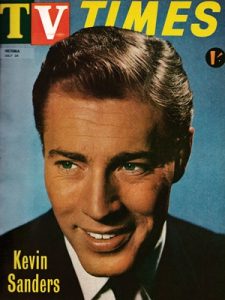
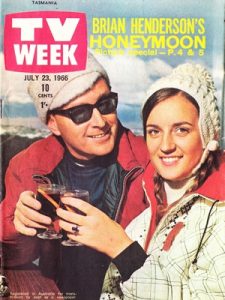
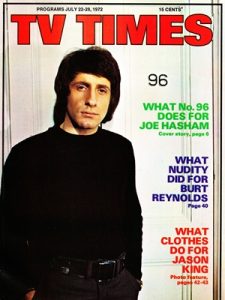
Interesting, and then the www exploded into our lives.